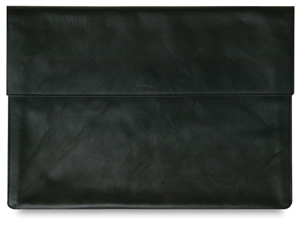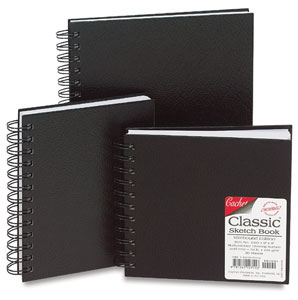How to Prepare an Art Portfolio

Applying to an Art College, University or a Foundation Course and Need an Art Portfolio?
If you have decided to apply to college, university or another art & design based course, you will quickly learn that you will need an art portfolio to showcase your work, ideas and skills. This article is a compilation of tips, resources, guidelines and suggestions I have found on the Internet, in books and from personal experiences.
Table Of Contents:
The Goal Of The Artist Portfolio
General Art Portfolio Guideline
Observational Art
Personal Art
Home Exam
Art Portfolio Presentation
Art Slides
Original Art
Video and CD-ROM
Art Photography
Art Sketchbooks
The Interview
Something To Consider
The Goal of The Art Portfolio
The goal of your art portfolio will depend on your particular vision, the audience (so you will need to understand what the people you will be giving it to are looking for/expect) and what kind of response from them you are aiming for. It is important to show a range of work and skills without putting too much one portfolio and watering down the best pieces. You want to make sure you only pick your best, most recent artwork and present each piece of art well.
TIP: Only include your best artwork that is beautifully matted and clearly signed, dated and titled on the back.
General Art Portfolio Outline
For most people the art selection process is where they get nervous. However, if you understand what your audience is looking for then it really should be a fun experience!
Most art programs will want to see works of art that fall into three distinct categories; Observational Art, Personal Art or a Home Exam. Some institutions will require a combination of two or three categories, and others will want to see only one.
Every institution has their own set of guidelines and requirements. So, although I have covered the general admission guidelines in this article that will apply to most places, you need to research the individual requirements of where you plan to apply. Write out what they each require – and their deadlines – to ensure your best chance of acceptance!
Now that you know what kind of art you will be showing, lets discuss what each of these three categories mean:
Observational Art
Observational art is drawing or painting in a traditional method using a still life, figure model, portrait or landscape as the subject and rendering the subject as accurately as possible. The image should not be taken from a photograph or the artists’ imagination, but from real life. Size of the artwork should be approximately 18″ x 24″ or larger in scale and fill the entire surface of the paper or canvas. Most work in this category is done in pencil, charcoal, or other drawing mediums, but it can also include painting and collage.
Personal Art
Personal art is the work done outside of a classroom situation and reflects the artists’ unique interests in use of materials, subject matter and concept. Work can be completed in any media including (but not limited to) drawing, painting, photography, mixed media, digital/computer art, film/video, ceramics, sculpture, animation and performance art.
Home Exam
The home exam consists of creating a specific piece of art. For example your particular institution may require you to include a piece of art with the subject being a specified object like a “bicycle”.
Art Portfolio Presentation
It would be very costly to mail out tones of portfolios and most of the places requesting them don’t have the space to receive thousands so, usually they will want your portfolio submitted in 35-mm slide format. Original artwork, if requested, should be documented on slides prior to mailing in case the portfolio is lost in the mail or unfortunately damaged.
Art Slides
If you need to photograph your art on slides, keep in mind that documenting your artwork can be very tricky and time consuming – do not underestimate the time required for this and start early! Before you begin however, make a list of the places you wish to apply to and ensure you are making enough all of them. Personally, I find it is always better to have extras then not enough and I like to keep a master set just in case I need to make copies later.
Some Tips:
- Use a 35mm camera with manual operation, if possible. The background should be solid white or black depending on the art.
- When photographing indoors, use photo-flood bulbs for lighting because a flash will often produce glare or hot spots.
- Outdoor photography usually produces even lighting. Be sure to prevent shadows from falling on two-dimensional work. But, shadows are sometimes desirable for three-dimensional work if they help define edges or textures.
- Fill the frame in the viewfinder with the image of your work so that it is centered and parallel with the frame lines.
- Only submit focused and clear slides.
- Label the slides (all of them) with your name, date, title, and dimensions of the work.
- Include a separate typed slide reference/description sheet.
Original Art
Some things to keep in mind when submitting original art:
- Do not include torn or poorly cared for artwork.
- Include your most recent work.
- Include only finished or completed works (avoid sending too many studies or gestures.)
- Include your name, date and title of work on the back of each individual artwork.
- Photograph on slides all 3-dimensional/sculptural work (do not mail 3-dimensional work.)
Video and CD-ROM Art Portfolios
Do not assume that they will accept a new media portfolio! If you plan to send a new media art portfolio you need to be 100% sure not only that they will accept it but that they can open it. Ensure that the format is compatible between Mac and PC, that it can be opened using basic software. If you are not sure, ASK! Heck, ask anyways because the last thing you want is them to not be able to open or accept it!
Guidelines:
- Make sure that your work is as finished/complete early as new media can be very time consuming!
- Include a color printout of the work and attach a list of instructions and programs used
- Videos should adhere to each school’s time limitations and compatibility requirements.
Art Photography
If you are including photographic art only include works that are shot and printed by you. Do not use photographs printed at “One Hour Photo” or any other photo labs. With photography, schools are just as interested in why you chose the subject matter as in how well it was printed. Lastly, you should always attach a brief description (typed in a clear legible font) on the back of each photograph explaining why were drawn to the subject.
Art Sketchbooks
Sketchbooks are usually required to be submitted alongside the main portfolio depending on the school, so please check the sketchbook requirements for your particular course. In preparation, try and separate research sketchbooks from experimental/exploratory books as some art schools ask for this and it will make your life easier later.
SUGGESTIONS
- Follow the guidelines provided by the school/workplace to the best of your ability and if you have questions regarding how to submit your portfolio, don’t hesitate to call them and get directions.
- I suggest you get a “Return Receipt Requested” to ensure that delivery of your work made it to the right person in the right department and on time.
The Interview
Again, depending on their particular requirements an interview is usually conducted. For your art school interview, just like any personal interview, preparation is key! Do your research, understand them and what they pride themselves on and make a list of good questions to ask them. It’s also advisable to set up a mock interview with someone who has completed this process and can be brutally honest with you.
Something To Consider
Applying to art schools or any other application requiring you to show your personal work is very exciting but for many it can be a little scary. Speaking from my personal experience dealing with many artists at all stages of their careers, the fear of rejection is something that can not be over looked. Being unsuccessful with your application is usually harder to hear then you may think think it will be. If you are a parent of a child applying to art school be sure you take the time and discuss the chance of an unsuccessful attempt. Its important to never forget that art is very personal and no matter our age, the idea of being critiqued is not easy. Most importantly, negative feedback / rejection (or just the fear of) doesn’t mean you should ever give up. In reality it is the perfect time to learn and grow! Don’t believe me? Check out this image I came across on Facebook (I do not know the owner yet but will post a link when I figure it out).







Wow! What a wonderful resource! Thanks!
Totally bookmarking this! And LOVE the Famous Failures image!!!!